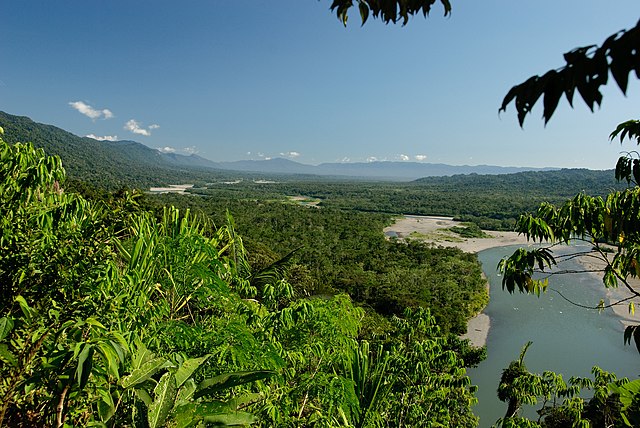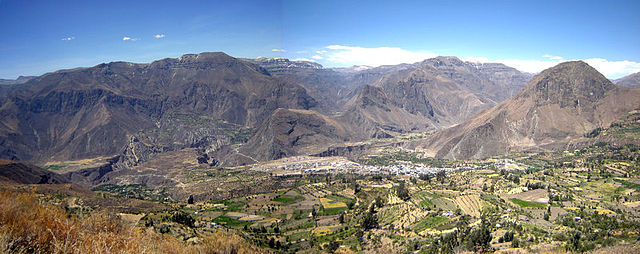Top Qs
Timeline
Chat
Perspective
List of protected areas of Peru
From Wikipedia, the free encyclopedia
Remove ads
Peru is recognized as one of the world's 17 megadiverse countries, due to its high concentration of species and diverse ecosystems.[1] Peru’s protected areas are continental and marine regions formally designated by the State to conserve the country’s biological diversity and associated cultural, scenic and scientific values, while contributing to sustainable development. These areas are administered at three levels: by the National System of State‑Protected Natural Areas (Spanish: Sistema Nacional de Áreas Naturales Protegidas por el Estado, SINANPE) under the National Service of Natural Protected Areas (SERNANP); by regional governments as regional conservation areas (Áreas de Conservación Regional, ACR); and by private individuals or communities as private conservation areas (Áreas de Conservación Privada, ACP).[2]

- National parks
- National reserves
- National sanctuaries
- Historic sanctuaries
- Landscape reserves
- Wildlife refuges
- Communal reserves
- Protected forests
- Game reserves
- Reserved zones
As of 2025[update], Peru comprises 256 protected natural areas covering terrestrial and marine environments: 77 managed nationally by SINANPE, 35 by regional governments, and 144 under private administration.[3] These areas cover 21.67% of the country’s terrestrial territory and 7.89% of its marine territory.[4] The system includes 15 national parks, 18 national reserves, 9 national sanctuaries, 4 historic sanctuaries, 2 landscape reserves, 3 wildlife refuges, 10 communal reserves, 6 protected forests, 2 game reserves, and 8 reserved zones, representing the country’s altitudinal gradients from the Amazon lowlands through Andean highlands to Pacific coastal deserts.[5] Protected Natural Areas Day (Día de las Áreas Naturales Protegidas del Perú) is celebrated annually on 17 October, recognizing their critical role in biodiversity conservation, ecosystem services, and sustainable development for present and future generations.[6] This list includes all terrestrial and marine areas formally designated as protected under Peruvian law—at the national, regional, or private level—as of 2 July 2025[update].[3]
Remove ads
National System of State‑Protected Natural Areas
Summarize
Perspective
The National System of State-Protected Natural Areas is the network of nationally administered protected areas managed by the National Service of Natural Protected Areas under the Ministry of the Environment. Its objective is to support sustainable development by conserving representative samples of Peru’s biodiversity.[7] SINANPE sites, established with definitive status or with provisional status pending further study as reserved zones, are classified into ten legal categories, including national parks, reserves and sanctuaries.[8]
National parks



National parks are areas established by law to preserve one or more representative ecosystems in their natural state, safeguarding associated wildlife, cultural features, and scenic values. Human activities are restricted to indirect uses: scientific research and regulated tourism in designated zones. Peru currently has 15 national parks.[11]
‡ Purple – Park designated as both WHS and BR
National reserves



National reserves are legally constituted, permanent areas aiming both to conserve biodiversity and to permit sustainable use of wild flora and fauna. As direct‑use zones, they operate under management plans that authorize traditional resource use by local communities alongside conservation goals. There are 18 national reserves in Peru.[13]
‡ Purple – Park designated as both WHS and BR
National sanctuaries


National sanctuaries safeguard the habitat of a particular species or community of plants and animals, as well as natural formations of scientific or scenic interest. They allow indirect uses only, such as scientific study and tourism, but strictly within zones designated for those activities. Peru is home to 9 national sanctuaries.[13]
Historic sanctuaries

Historic sanctuaries preserve areas that combine significant natural values with archaeological or monumental heritage, or sites where key events in national history took place. Like other indirect‑use categories, they permit research and regulated tourism only in specified sectors. There are 4 historic sanctuaries in Peru.[13]
Wildlife refuges

Wildlife refuges protect areas of particular ecological importance, often rare habitats or breeding sites, to maintain or restore populations of wild species. They are direct‑use areas where, under management plans, local communities may continue traditional resource uses that support both livelihoods and conservation. Peru contains 3 wildlife refuges.[13]
Landscape reserves

Landscape reserves maintain geographic areas where human activity and the natural environment have coexisted harmoniously, yielding significant natural and cultural values. They allow sustainable traditional resource use by local populations under management plans that ensure both conservation and livelihood needs. Peru currently designates 2 landscape reserves.[13]
Communal reserves


Communal reserves are managed through contracts between rural communities and SERNANP to conserve wildlife for the benefit of neighboring populations. Under these agreements and management plans, communities act as co‑administrators and carry out sustainable traditional uses of natural resources. There are 10 communal reserves in Peru.[13]
Protected forests

Protection forests conserve fragile lands such as upper watersheds, riverbanks, and other erosion‑prone areas to stabilize soils and safeguard water resources. These are direct‑use areas where sustainable, traditional harvests by local communities are allowed under formal management plans. There are 6 protection forests in Peru.[13]
Game reserves
Game reserves are protected areas set aside for regulated sport hunting of wild species, governed by detailed management plans. They allow local residents to engage in traditional hunting practices within established quotas and seasons to ensure sustainable use. Peru has 2 game reserves.[14]
Reserved zones


Reserved zones are areas that meet the basic criteria to be designated as protected natural areas but require further studies to determine their appropriate boundaries, category, and management feasibility. They are considered provisional protections pending full classification within the national system. Peru currently has 8 reserved zones.[14]
Remove ads
Regional conservation areas
Summarize
Perspective



Regional conservation areas are protected natural areas administered by Peru’s regional governments and established by Supreme Decree at their request. As part of the Natural Protected Areas System, they are created on state lands free of exclusive rights and, under an approved management plan, allow sustainable use of resources, particularly by local communities, in accordance with conservation objectives.[15]
Remove ads
Private conservation areas
Summarize
Perspective



Private conservation areas are voluntary commitments by individual or collective landowners, such as titled native communities or private entities, to dedicate part or all of their property to biodiversity conservation. Recognized by ministerial resolution of the Ministry of the Environment, private conservation areas bolster the System’s coverage by protecting sites of high ecological or scenic value, supporting ecosystem services, scientific research, environmental education and specialized tourism under a long-term conservation framework.[16]
Remove ads
See also
References
External links
Wikiwand - on
Seamless Wikipedia browsing. On steroids.
Remove ads
